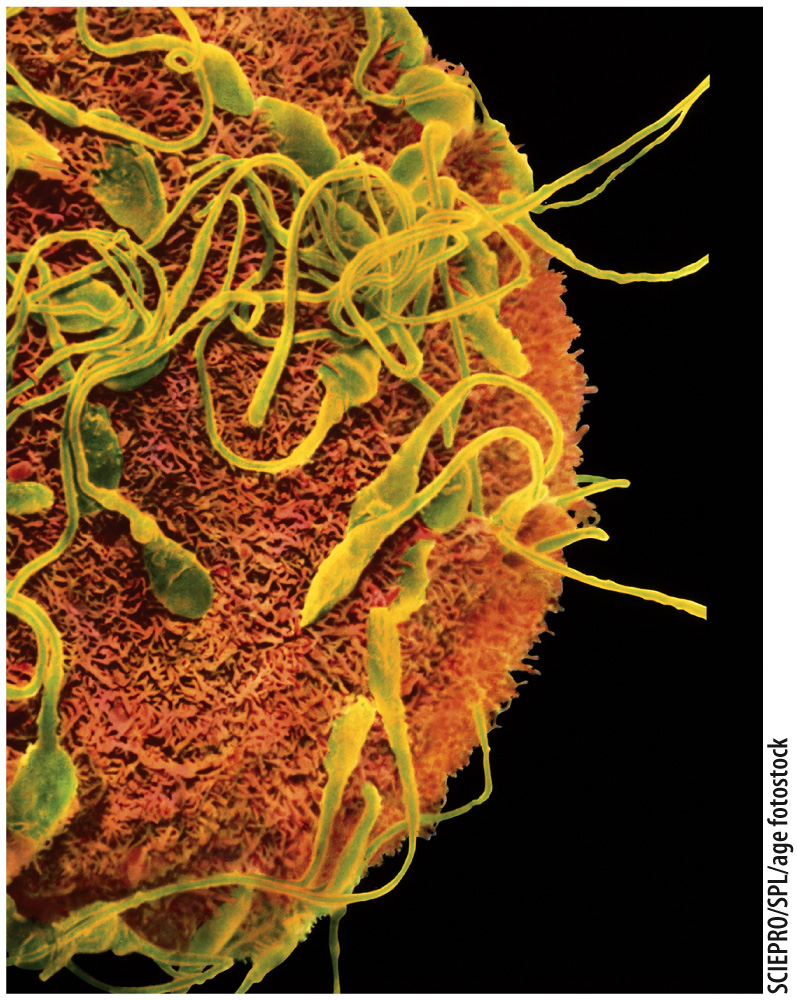Chapter 42 Introduction
CHAPTER 42
Animal Reproduction and Development

Core Concepts
- Reproduction is a basic feature of living organisms and occurs both asexually and sexually.
- The movement of vertebrates from water to land involved changes in reproduction, including internal fertilization and the amniotic egg.
- The male reproductive system is adapted for the production and delivery of sperm, and the female reproductive system is adapted for the production of eggs and, in some cases, support of the developing fetus.
- Human reproduction involves the formation of gametes, fertilization, and growth and development.
Children are sometimes gently introduced to the subject of human reproduction by reference to “the birds and the bees.” Since birds and bees reproduce, it is assumed that they can substitute for humans in discussions about reproduction. But how relevant is bird and bee reproduction to human reproduction? It might come as a surprise that most male birds don’t have penises, and that male bees don’t even have fathers. Perhaps, then, the lesson of “the birds and the bees” is not so much in what it teaches us about human reproduction, but, as we explore in this chapter, in showing us that reproductive strategies among organisms are spectacularly diverse.
Reproduction is a striking and conspicuous feature of the natural world. Flowers burst into bloom each spring to attract pollinators; male fireflies light up brilliantly on warm summer nights as they signal to females in the grass below; birds sing and display ornate plumage to attract mates. Most living organisms have the ability to reproduce—
This chapter focuses on reproduction and development. We begin by considering reproduction broadly among diverse organisms, then turn our attention to animal, and specifically vertebrate, reproduction and the surprise that even among vertebrates there is quite an array of reproductive strategies. In the last two sections, we focus on human reproduction, starting with reproductive anatomy and physiology, and then following reproduction from gamete formation to fertilization, pregnancy, and birth.